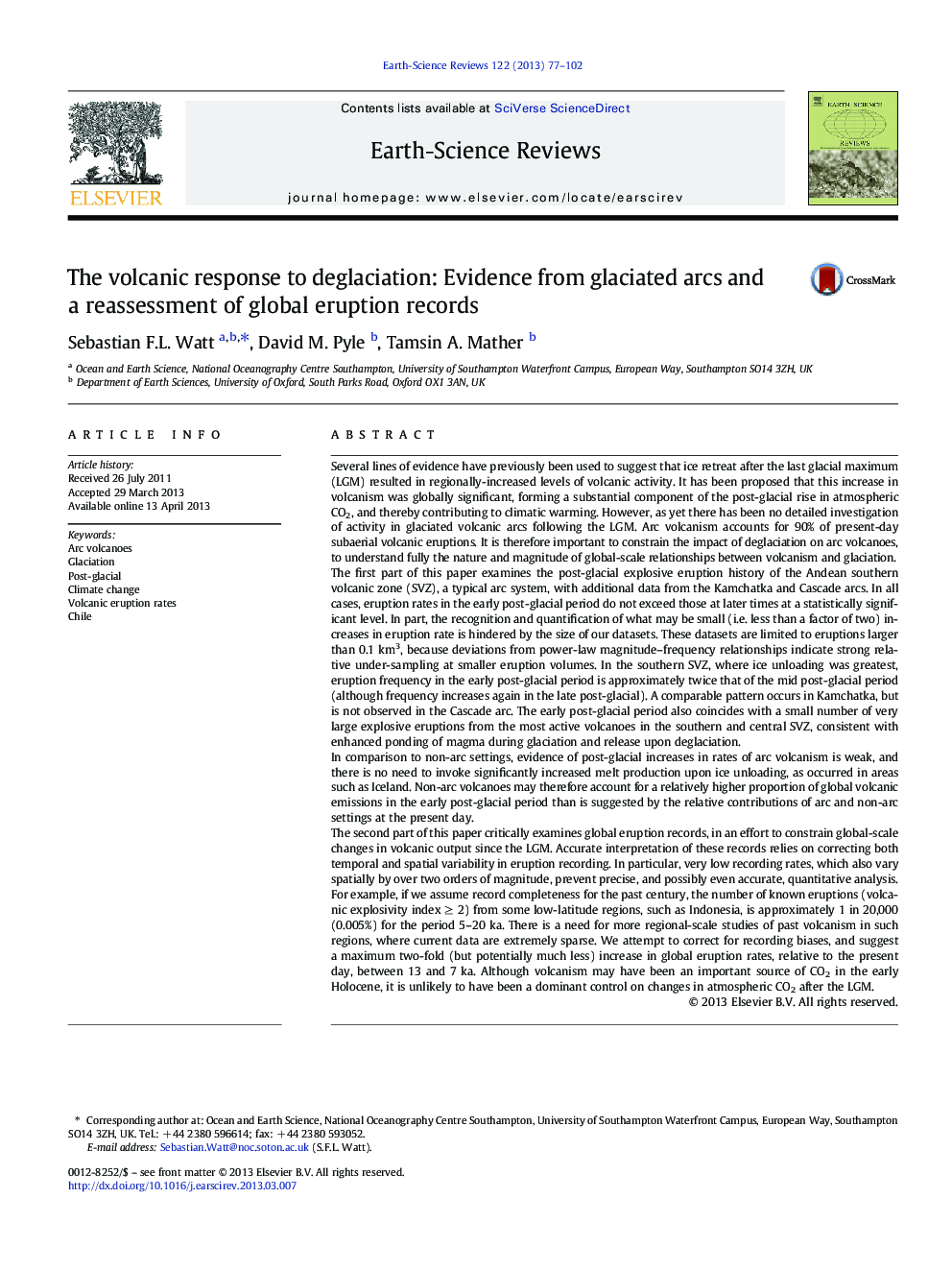| کد مقاله | کد نشریه | سال انتشار | مقاله انگلیسی | نسخه تمام متن |
|---|---|---|---|---|
| 4725844 | 1639980 | 2013 | 26 صفحه PDF | دانلود رایگان |
Several lines of evidence have previously been used to suggest that ice retreat after the last glacial maximum (LGM) resulted in regionally-increased levels of volcanic activity. It has been proposed that this increase in volcanism was globally significant, forming a substantial component of the post-glacial rise in atmospheric CO2, and thereby contributing to climatic warming. However, as yet there has been no detailed investigation of activity in glaciated volcanic arcs following the LGM. Arc volcanism accounts for 90% of present-day subaerial volcanic eruptions. It is therefore important to constrain the impact of deglaciation on arc volcanoes, to understand fully the nature and magnitude of global-scale relationships between volcanism and glaciation.The first part of this paper examines the post-glacial explosive eruption history of the Andean southern volcanic zone (SVZ), a typical arc system, with additional data from the Kamchatka and Cascade arcs. In all cases, eruption rates in the early post-glacial period do not exceed those at later times at a statistically significant level. In part, the recognition and quantification of what may be small (i.e. less than a factor of two) increases in eruption rate is hindered by the size of our datasets. These datasets are limited to eruptions larger than 0.1 km3, because deviations from power-law magnitude–frequency relationships indicate strong relative under-sampling at smaller eruption volumes. In the southern SVZ, where ice unloading was greatest, eruption frequency in the early post-glacial period is approximately twice that of the mid post-glacial period (although frequency increases again in the late post-glacial). A comparable pattern occurs in Kamchatka, but is not observed in the Cascade arc. The early post-glacial period also coincides with a small number of very large explosive eruptions from the most active volcanoes in the southern and central SVZ, consistent with enhanced ponding of magma during glaciation and release upon deglaciation.In comparison to non-arc settings, evidence of post-glacial increases in rates of arc volcanism is weak, and there is no need to invoke significantly increased melt production upon ice unloading, as occurred in areas such as Iceland. Non-arc volcanoes may therefore account for a relatively higher proportion of global volcanic emissions in the early post-glacial period than is suggested by the relative contributions of arc and non-arc settings at the present day.The second part of this paper critically examines global eruption records, in an effort to constrain global-scale changes in volcanic output since the LGM. Accurate interpretation of these records relies on correcting both temporal and spatial variability in eruption recording. In particular, very low recording rates, which also vary spatially by over two orders of magnitude, prevent precise, and possibly even accurate, quantitative analysis. For example, if we assume record completeness for the past century, the number of known eruptions (volcanic explosivity index ≥ 2) from some low-latitude regions, such as Indonesia, is approximately 1 in 20,000 (0.005%) for the period 5–20 ka. There is a need for more regional-scale studies of past volcanism in such regions, where current data are extremely sparse. We attempt to correct for recording biases, and suggest a maximum two-fold (but potentially much less) increase in global eruption rates, relative to the present day, between 13 and 7 ka. Although volcanism may have been an important source of CO2 in the early Holocene, it is unlikely to have been a dominant control on changes in atmospheric CO2 after the LGM.
Journal: Earth-Science Reviews - Volume 122, July 2013, Pages 77–102
